UPDATE: I WON! Check out this post for more details.
"Sureg amgalan sun shim arvin boltugai"
(Let the herd be peaceful and milk be in abundance)
- Mongolian greeting
As a person who is very passionate about wildlife, conservation and the environment, reading the news can be a terribly depressing daily affair. The multitude of issues which plague our planet and threaten the future of our wild places and even our own civilisation are too numerous to list here, but at least, once in a while, there are glimmers of hope and inspiration, stories of efforts that illustrate the will to make a difference, and to do one's part, no matter how small it may seem, to help make the world a better place.
Where it comes to narratives about environmental destruction and protection, large multinational corporations are often depicted as the bad guys, wreaking havoc in a limitless hunger for profit, no matter the ecological or social costs. Yet this is a myth that ignores and overlooks the good that many companies do, often under the banner of corporate social responsibility. Skeptics may claim that it's usually just greenwashing or mere token efforts that in no way override the environmental damage that is wrought in the name of the almighty dollar, but I like to be optimistic and believe that business entities involved in environmental efforts do have the ability to make a powerful impact.
One would think that companies which specialise in manufacturing products for outdoor use should be especially interested and involved in such activities; after all, their business relies on consumers choosing to explore the so-called great outdoors, whether it's hiking, mountain climbing, or camping in the woods. This in turn relies on there being some semblance of wilderness or nature area that people find worth visiting in the first place. Timberland, with its Earthkeepers, and the subject of this blog post, is one such example.

Earthkeeper is more than just the name of a line of products sold by Timberland; it also applies to the company's philosophy of environmental responsibility. Whether it is adopting renewable energy for its operations, or incorporating recyclable materials in the manufacture of its products, or informing consumers about the environmental impact of their purchases, it certainly is fascinating to see how one company is showing its commitment towards protecting the environment.
As quoted on Timberland's site about Earthkeepers:
Earthkeeper is a word created by us. "Earth" means the place we live in and "keeper" means guardian. When you put the two words together, it represents someone who is concerned about environmental issues and willing to take action to protect our Earth, like the minor act of cycling instead of driving and using energy efficient bulbs, to bigger things like replanting eroded areas and using renewable energy to reduce the burden on our environment.That's all well and good, you might say. But what about communities that might be threatened by environmental destruction? Is Timberland doing anything to help them out?
This is what Earthkeepers do. Our goal is to share this ideology with future Earthkeepers and move forward. For the Earth that we live on, consider joining the Earthkeepers.
To us, a life without the outdoors is unimaginable. We love the outdoors and that's why we started Earthkeepers. When Timberland realised that the production of our outdoor boots, shoes and accessories affects our environment, we relooked at the way we do business and did something about it.
Apart from carrying out regional measures and eco-friendly activities worldwide, we also increased our usage of renewable energy as well as organic and recyclable materials in the production and transportation of our products. We are also the first company in the world to use recycled rubber from discarded tyres to manufacture the soles of our Earthkeepers™ shoes collection.
This is where one of Timberland's flagship projects comes in.
Desertification in Inner Mongolia
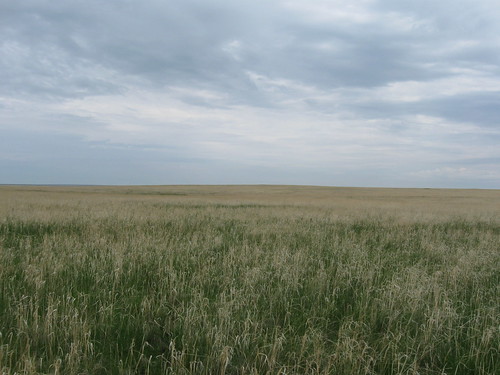
Mongolian steppe;
(Photo by RarePlanet)
The grasslands of the Inner Mongolia Autonomous Region in China form part of the great Eurasian Steppe that stretches from Hungary all the way to Mongolia* and Manchuria. Mention grasslands and wildlife, and people often think of the massive migrations of zebra, wildebeest and antelope on the African savannas, or bison grazing on the North American prairies, but the vast Eurasian steppe is also home to a variety of amazing fauna and fascinating cultures.
*Inner Mongolia is part of China, while the term Outer Mongolia refers to the independent state of Mongolia as well as the Republic of Tuva in Russia.
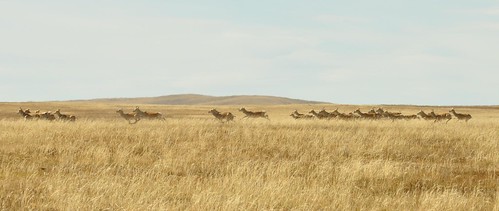
Mongolian gazelles;
(Photo by jtkerb)
However, this fragile habitat is at risk of vanishing as a result of poor land management practices. Mention Mongols and one thinks of warriors on horseback; when they're not sweeping across the plains pillaging cities, they're leading a nomadic existence, living in yurts and roaming the pastures with their herds of sheep, horses and camels.
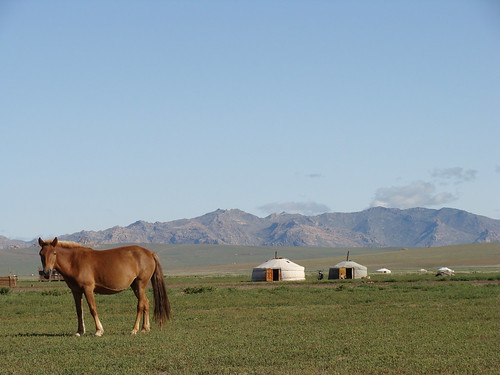
Yurts, Mongolia;
(Photo by Julian Mason)
Usually, this meant that the livestock were widely dispersed, and never lingered in an area long enough to seriously overgraze the land. Once an area had been grazed, the herders moved on. There was plenty of grass for all, including the herds of wild herbivores (more on those later). But now there are more people and more animals, and many of the herders have settled down in permanent locations. The number of grazing livestock in Inner Mongolia has doubled over the past 30 years.
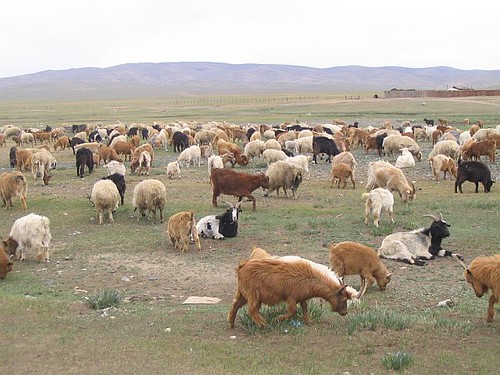
Sheep, Mongolia;
(Photo by shellyhaider)
The result? The animals remain in a single pasture all year round. Not only do they eat all the grass, they nibble it down to the roots, and the continuous trampling of hooves destroys any chance of regrowth. Where crops are grown, overcultivation depletes the limited water supply and reduces soil fertility. Woodland areas have been cleared for firewood or to make way for agriculture and industry, and any saplings that manage to take root are soon trampled to death, if not eaten. The few rivers, oases and wells are heavily tapped to support human activities, with decreasing amounts of water available to support natural vegetation and wildlife. In some areas, unscrupulous collectors rake and plough up large areas of land to gather the black cyanobacterium known as fat choy or fa cai, an expensive food item popular with Chinese around the world, destroying valuable pasture in the process.

Desertification, Inner Mongolia;
(Photo by derikz)
To top it all off, there is the ever-present specter of climate change. The region has always received little rain, and with apparent shifts in weather patterns, the result has been warmer winters and even less rainfall.
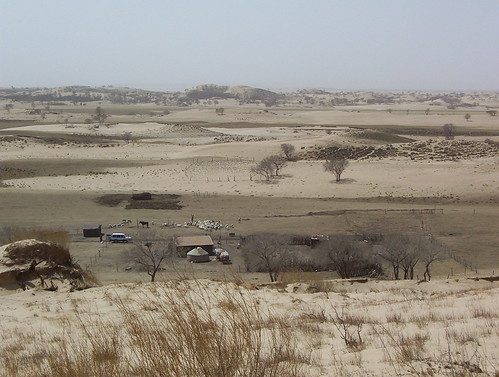
Desertification in Inner Mongolia;
(Photo by adochintreks)
With overgrazing and less rain, the land can no longer support the grasses and other vegetation it once did. The dry, exposed soil is quickly picked up by the strong winds and blown away, turning the once lush pastures into barren deserts, and creating sandstorms that plague cities elsewhere in China and even Korea and Japan.

Sandstorm, Beijing;
(Photo by michaeluyttersp)
Desertification is a serious threat to the grasslands, affecting 27 per cent of China's land mass, or some 2.6 million km². In addition, up to 3,000 km² of land, five times the size of Singapore, is claimed by deserts each year. The dunes and shifting sands of the Gobi continue to creep southwards, burying villages and fields in dust and creating desolate wastelands that can hardly support camels, let alone sheep. It's a tragic story that is taking place all over the arid and semi-arid parts of western and northern China.
The Horqin region in Inner Mongolia is one such example. Once known as the Horqin Pasture, from the mid 1960s to the late 1970s, forest cover in the region was reduced from 16.4 percent to 5.2 percent. With ever increasing desertification, it is now called the Horqin Desert, and covers an area 56 times the size of Singapore. There is vast potential here for corporations to show their commitment towards protecting the environment, whether it is restoration of the original habitat, encouraging sustainability and better management of scarce resources, or mitigating the seemingly relentless spread of the desert.
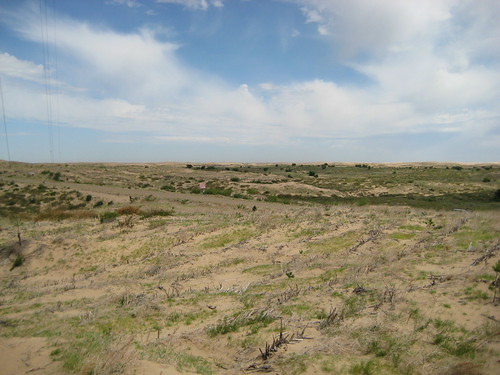
Desert in Horqin;
(Photo by gigirose)
Timberland is one of the companies that is working in the Horqin Desert to restore the denuded land to its former state. Since 2001, it has been involved in a community service project, planting scores of trees and shrubs in collaboration with Japan-based non-profit organisation Green Network. Volunteers help out in the construction of fences to keep grazing animals away from the planting sites, and drill wells that support irrigation systems that provide water for the plants and trees during the May-June dry season. From late July through August, poplar, willow, plum and pine saplings are planted along with native shrubs including sea buckthorn and industrial crops such as liquorice. The roots hold the soil together, reducing erosion, while trees serve as windbreaks, shielding sensitive areas from the onslaught of the wind.



Images from the 2010 trip;
(Photos from Timberland Singapore)
At the same time, local communities are engaged in work to water, prune and maintain the reforested areas, while being educated on sustainable agricultural practices. As stated by Yoshio Kitaura, Green Network's Executive Director:
Ultimately, the greening project needs to be run by the local people, for the local people. To achieve this, we need the local people to understand the benefits of the greening work and its significance. We also need to set up a scheme with sufficient economic backing to allow the greening work itself to continue.Not all the plants survive, but those that do provide an invaluable role in staving off the encroaching sands. With the trees maturing and the soil stabilised, grasses can recolonise and reclaim the area, reversing desertification and restoring the lost fertility of the steppes.
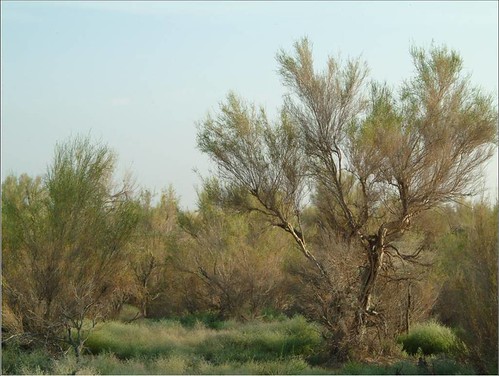
Forest, Inner Mongolia;
(Photo by RarePlanet)
As of April 2010, Timberland has already planted 1 million trees, and aims to plant a total of 2 million trees within the next 10 years. With the help of Green Network, Timberland employees, consumers and retail partners have worked to transform 2.67 km² of the Horqin Desert into a verdant grassland and forest. And it's just a part of the contribution to the overall accomplishments of Green Network, which has planted more than 3.5 million trees that cover more than 14 km² in the Horqin Desert since 1999. Overall forest area rebounded to 17 percent by 2006, with the collaborating partners aiming to eventually reach 25 percent coverage.
Similar projects are taking place elsewhere in China, such as the Great Green Wall. It's a long way from completely halting and reversing desertification in China as a whole, a process that will take a very long time, but it's stories like these that show how governments, corporations, NGOs, committed individuals and local stakeholders can all work together to restore some of the ecological damage that has been wrought over the years. Africa is now learning from China's example, with the nations of the Sahel region working on similar afforestation projects to stem the spread of the Sahara.
Wildlife of Inner Mongolia
Now, if you'll allow me to digress for a moment, while I indulge in some zoology geekiness...
Because of the long history of human activity and habitation in the Inner Mongolia region, it is difficult to reconstruct the original wildlife that would have been found in the area. Many species of the steppes of Mongolia and China are now endangered and threatened with extinction; widespread hunting takes its toll, as does overgrazing and competition with domestic livestock for food and water, pushing many of these species into marginal habitats that can barely support them. Some, like Przewalski's horse and wild bactrian camel, are also at risk of genetic pollution due to hybridisation with their domestic counterparts. But if you can imagine a time before human beings altered the landscape on a massive scale and decimated the great herds, you will see a biome perhaps comparable to the great North American prairies or African savannas.
The plains of Inner Mongolia are inhabited by herds of herbivores such as gazelles, wild bactrian camels, Przewalski's horse (the last remaining truly wild horse), and khulan (Mongolian wild ass). These herds wander far and wide, migrating across seemingly vast and empty landscapes, in search of good grazing. These would in turn support packs of wolves, the main predator on the plains, and scavengers like the Himalayan griffon vulture and cinereous vulture, the world's largest vultures.
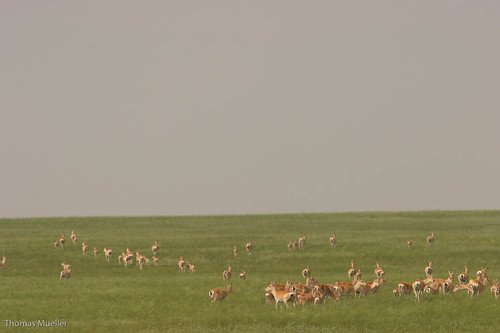
Mongolian gazelles;
(Photo by RarePlanet)
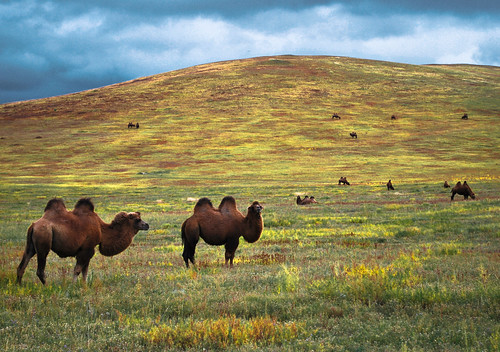
Bactrian camels;
(Photo by goznaraw)
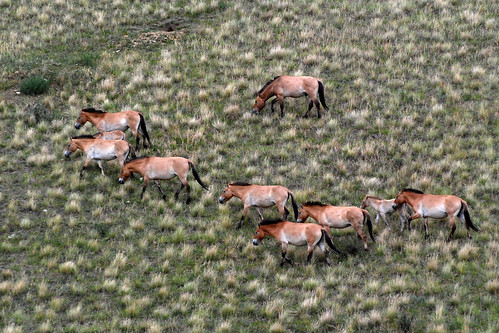
Przewalski's horses;
(Photo by viajologia)
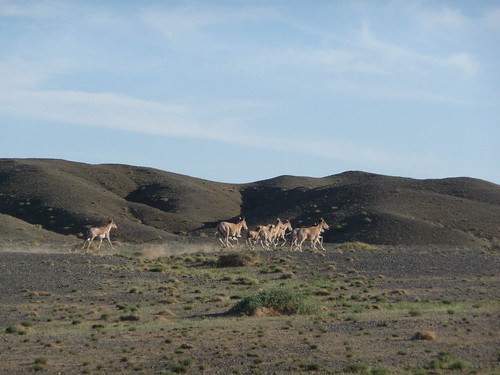
Khulan;
(Photo by D. Edmonds)
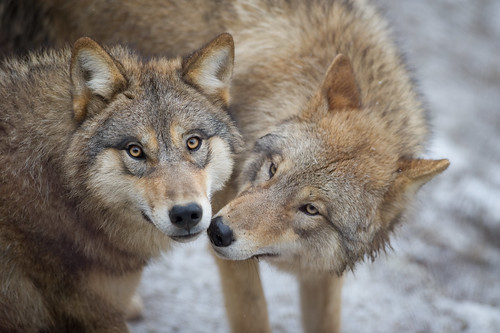
Mongolian wolves;
(Photo by s.baerfuss)


Left: Himalayan griffon vulture; (Photo by jcozannet)
Right: Cinereous vulture; (Photo by rahul kala)
On a smaller scale, hares and pikas, as well as rodents like marmots, ground squirrels, hamsters, and gerbils, all sustain carnivores such as various species of eagles, foxes, weasels and the rare Pallas's cat.
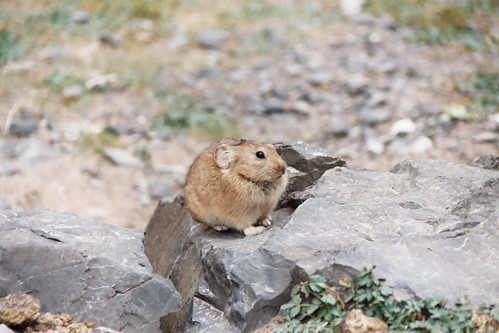
Pallas's Pika;
(Photo by isajean)

Mongolian marmot;
(Photo by Mr.Ganaa)
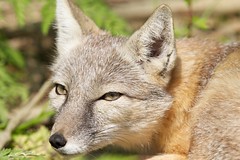
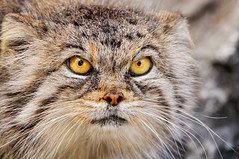
Left: Corsac fox; (Photo by Tayto2010)
Right: Pallas's cat; (Photo by Tambako the Jaguar)
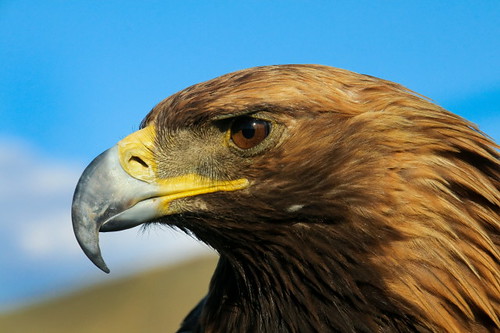
Golden eagle;
(Photo by eojbayara)
Even in the semi-arid steppes, wetlands form around lakes and along rivers, and large migratory flocks of wild ducks and geese gather alongside waders, storks and cranes in search of feeding and nesting grounds. The grasslands also support birds like pheasants, partridges, bustards and sandgrouse.

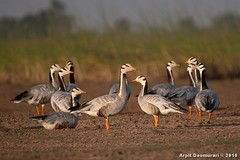
Left: Whooper swans; (Photo by Richard Fenn)
Right: Bar-headed geese; (Photo by Arpit - The Waders)

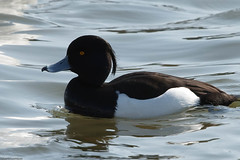
Left: Chinese spotbill duck; (Photo by Cisticola)
Right: Tufted duck; (Photo by Necator)

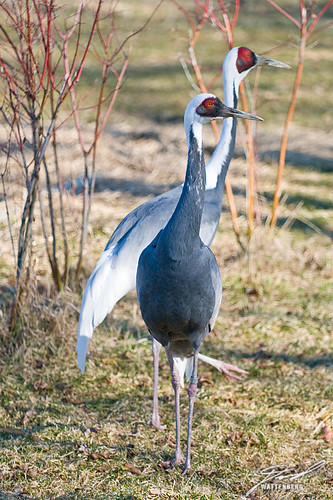
Left: Black stork; (Photo by Gio'71)
Right: White-naped cranes; (Photo by DarrylW4)
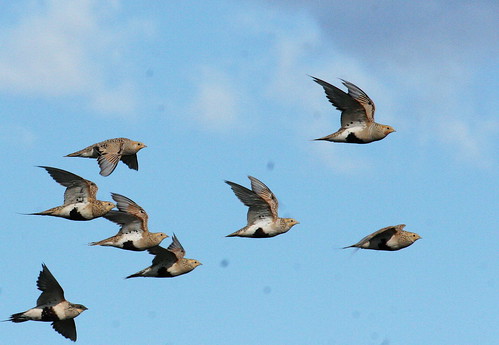
Pallas's sandgrouse;
(Photo by naturegucker.de)

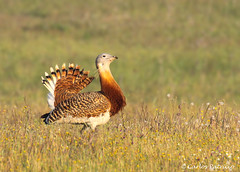
Left: Daurian partridge; (Photo by naturegucker.de)
Right: Great bustard; (Photo by Carlos Patrício)
In surrounding areas, the mountains and rocky crags are the domain of the argali and Siberian ibex (species of wild sheep and wild goat respectively), both preyed upon by the elusive snow leopard.
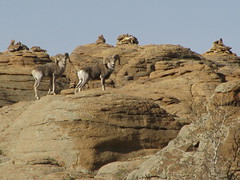

Left: Argali; (Photo by threecorneredvoid)
Right: Siberian ibex; (Photo by Scott Christian)
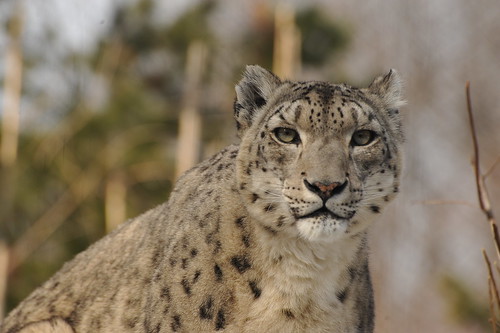
Snow leopard;
(Photo by asterix611)
Where there is enough moisture to sustain the growth of temperate forests, wild boar, various species of deer, moose, bears, lynx and even leopards and tigers roam the wooded foothills.

Brown bear;
(Photo by Shay Haas)

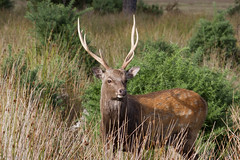
Left: Roe deer with fawn; (Photo by Olli38)
Right: Sika deer; (Photo by zebediah007)
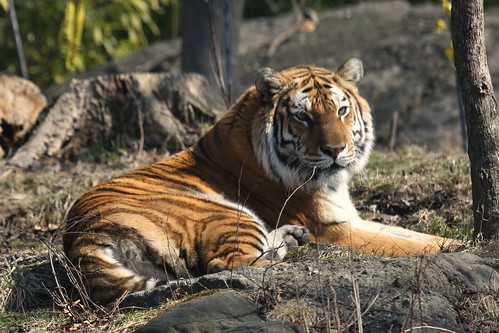
Amur tiger;
(Photo by Scott Hanko)
Today, many of the larger animals and birds of the steppes have either been completely extirpated from the region, or just barely hang on in inaccessible, protected areas. Others are still present, but in much reduced numbers. The recovery of these species depends very much not just on conservation efforts to eradicate poaching, but also on the survival of the forests and grasslands. Perhaps, it is not too ambitious to dream that one day, wild tigers will prowl the forests of China once again, and the cranes will soar above the plains in flocks of thousands, just like they used to.
Final thoughts
Incidentally, the World Day to Combat Desertification is observed every year on 17th June.
I was excited when I read that Timberland was collaborating with Nuffnang to offer a deserving blogger the opportunity to join as a Timberland Earthkeeper. I'm no vegan tree-hugging hippie, but the environment and conservation have been lifelong passions of mine, culminating in my involvement as a volunteer in local nature interest groups, and of course, focusing my blogging on topics related to nature and the environment. While I am a lot more familiar with Singapore's shores and forests, a trip to Inner Mongolia would be a genuinely thrilling experience, especially since I would be involved in a community-based effort that isn't just a one-off feel-good PR exercise, but one that has been shown to generate real positive and long-lasting impacts, restoring the local ecosystem and helping to improve the lives of the communities.
Here's some RazorTV clips from last year's Timberland Earthkeepers trip to the Horqin Desert:
Pamela Ho, host of radio programme The Living Room on 938 Live, also made the trip last year, and shares her experiences in this blog post, and talked about some of the people she met and interviewed.
Admittedly, desertification in China has never really been one of the issues I focus on; I've always had a tendency to follow news about loss of biodiversity and megafauna in tropical areas more closely. But the opportunity to visit and experience the great Eurasian steppe is one that is too good to miss; it is a place that has lost much of its wildlife due to human activities, but if the afforestation efforts are any indicator, perhaps, one day, we may see the herds of gazelles and khulan darken the plains of Horqin once again.
Another big draw is the fact that the person who is selected gets to visit the Jiuzhaigou Valley as well. Situated in the north of Sichuan province, this is a very different ecosystem from that of the steppes of Inner Mongolia. Covered in lush temperate forests and woodlands, this area is home to two of China's iconic endangered species, the giant panda and golden snub-nosed monkey.
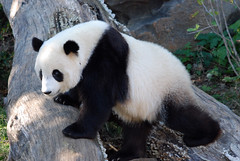

Left: Giant panda; (Photo by WVJazzman)
Right: Golden snub-nosed monkey (Photo by floridapfe)
To whoever wins this contest, and gets the opportunity to travel to Inner Mongolia as part of Timberland Earthkeepers, I offer a final Mongolian greeting:
"Altan shar zam tani ulziitei baih boltugai"
(Let your journey be safe and successful)
Be a Timberland Earthkeeper and support desert greening in Horqin!